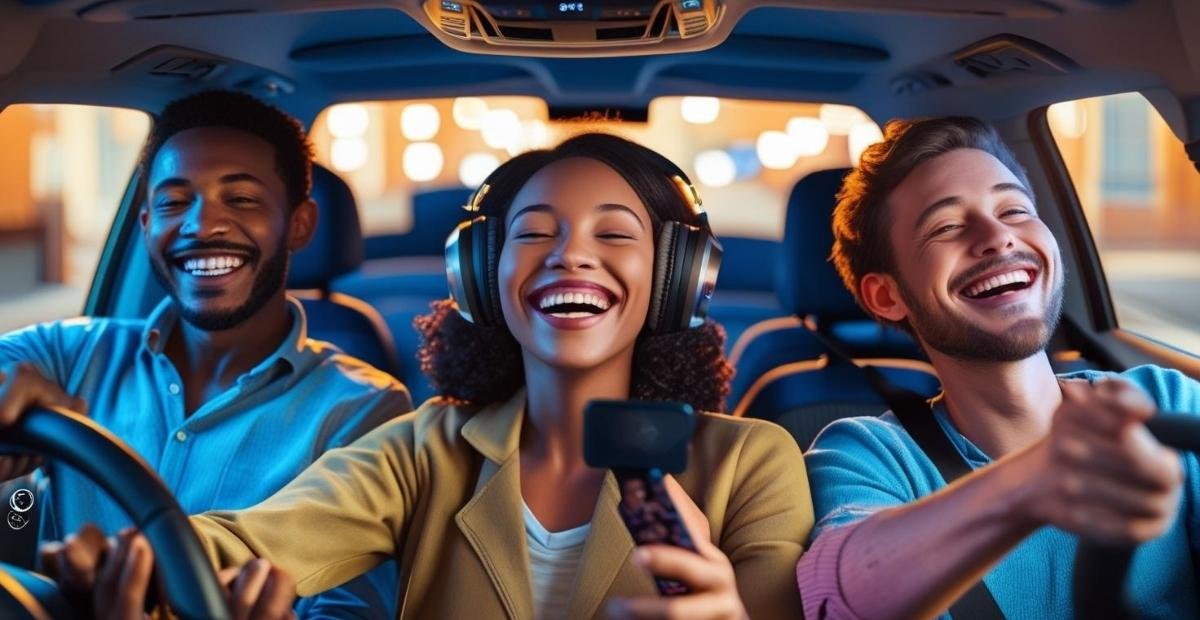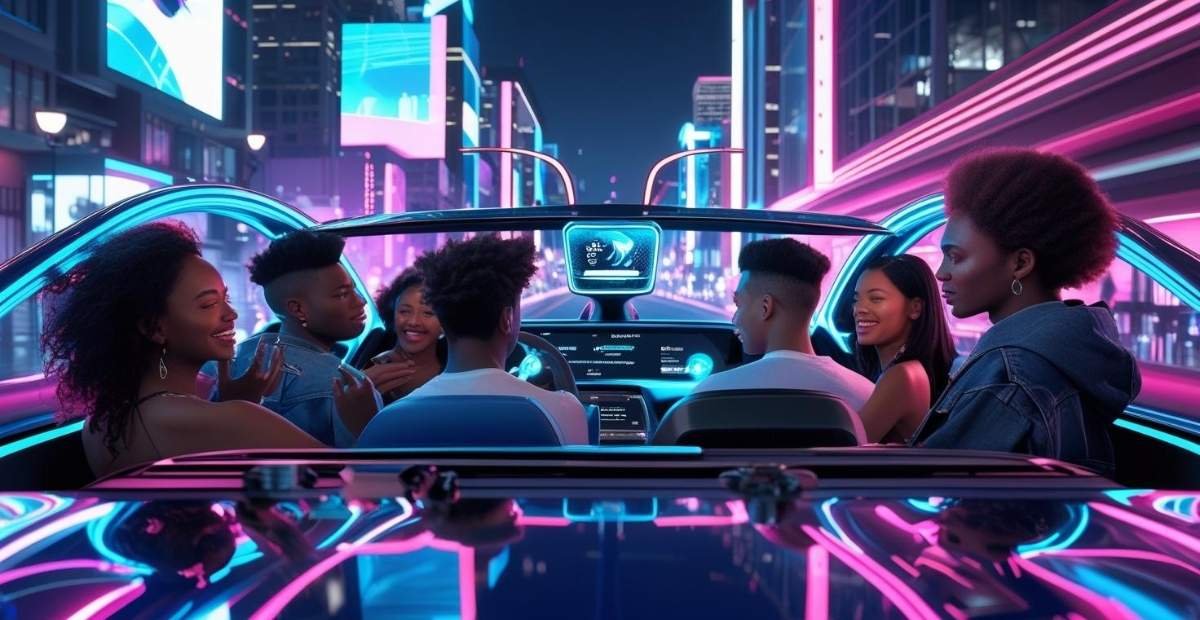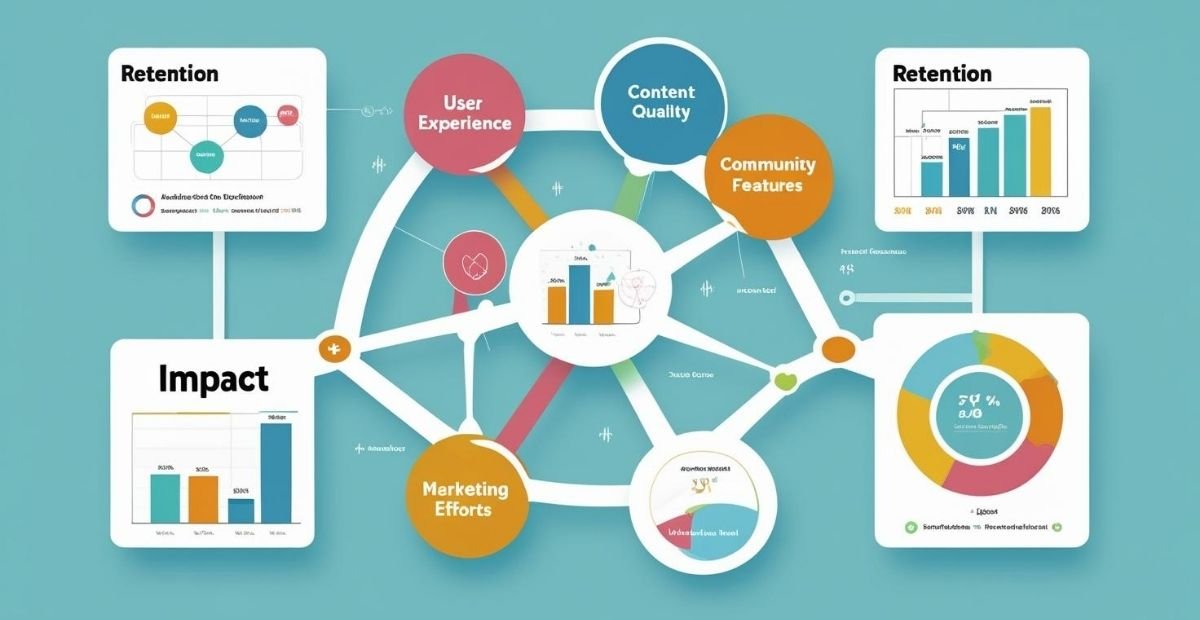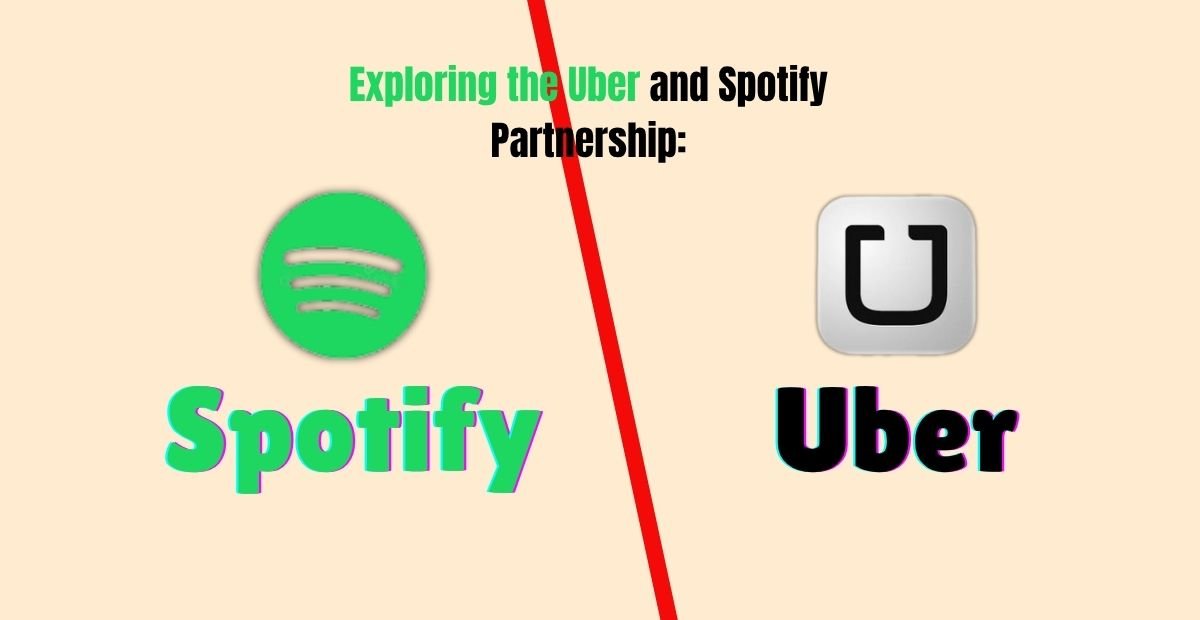The collaboration between Uber and Spotify marks a significant step in enhancing user experiences by combining transportation with personalized music streaming. Here’s a detailed overview in points:
- Strategic Alliance
- Uber and Spotify joined forces to offer riders the ability to control the music during their Uber trips.
- This partnership aims to blend mobility with entertainment seamlessly.
- Personalization of Rides
- Riders can connect their Spotify accounts to the Uber app and play their favourite songs, playlists, or podcasts during the journey.
- This feature allows for a tailored experience, matching music choices to individual moods and preferences.
- Enhanced User Engagement
- By integrating Spotify’s extensive music library, Uber increases customer satisfaction and engagement.
- Riders enjoy more interactive and enjoyable trips.
- Mutual Benefits
- Spotify gains exposure to Uber’s massive user base, potentially increasing its subscriber count.
- Uber differentiates itself from competitors by offering a unique, value-added service.
- Technological Innovation
- The partnership showcases how companies from different sectors can collaborate using technology to enhance everyday experiences.
- It exemplifies the trend of cross-industry digital integration.
The Evolution of Ride-Sharing and Music Streaming
The worlds of ride-sharing and music streaming have both transformed dramatically over the past decade, shaping how people move and enjoy entertainment. Their evolution reflects changing consumer habits and technological advancements. Here’s a detailed look at their progression:
- Emergence of Ride-Sharing Services
- Ride-sharing began as an alternative to traditional taxis, offering convenience through smartphone apps.
- Companies like Uber and Lyft revolutionized urban transportation by connecting drivers and riders via digital platforms.
- The model emphasized affordability, ease of use, and real-time tracking.
- Growth of Music Streaming Platforms
- Music streaming shifted the industry from ownership (CDs, downloads) to access-based listening.
- Platforms like Spotify, Apple Music, and Pandora provide vast libraries accessible anywhere, anytime.
- Subscription and ad-supported models offer flexibility for diverse user preferences.
- Technological Advancements
- Both industries leverage mobile technology, GPS, cloud computing, and data analytics.
- Integration of AI and personalization algorithms enhances user experiences in music discovery and ride efficiency.
- Consumer Demand for Personalization
- Users increasingly seek tailored experiences, expecting seamless interaction between services.
- The merging of ride-sharing and music streaming caters to this demand for customized journeys and entertainment.

- Cross-Industry Collaborations
- Partnerships like Uber and Spotify exemplify how industries converge to create unique value propositions.
- Such collaborations enhance customer loyalty and redefine service standards.
How the Uber and Spotify Partnership Works?
The Uber and Spotify partnership creates an interactive and personalized experience by allowing riders to control the music during their Uber trips. This seamless integration leverages both platforms’ strengths to enhance the ride experience. Here’s how the partnership works in detail:
- Linking Spotify Account with Uber App
- Riders connect their Spotify accounts directly within the Uber app before or during the ride.
- This integration requires users to log in with their Spotify credentials securely.
- Music Control at Riders’ Fingertips
- Once linked, riders can choose playlists, albums, or individual songs from their Spotify library.
- Music controls are available through the Uber app, letting riders play, pause, skip, or change tracks during the trip.
- Personalized Music Experience
- The music played reflects the rider’s personal taste and preferences, making each journey unique.
- Spotify’s algorithms also suggest music based on past listening habits.
- Driver Participation
- Drivers use their car’s audio system to play the music selected by riders.
- Both parties enjoy an enhanced ride experience, fostering positive interactions.
- Compatibility and Availability
- The feature is available in select cities and requires compatible devices and app versions.
- Both Uber and Spotify frequently update their platforms to improve this integration.
- Benefits for Both Companies
- Spotify gains increased user engagement and potential subscriptions.
- Uber differentiates its service by offering added value through entertainment.
Benefits of the Uber and Spotify Integration for Riders
The integration of Uber and Spotify offers a unique and personalized experience that enhances the traditional ride. Riders enjoy several key benefits that make their journeys more enjoyable and engaging. Here’s a detailed breakdown:
- Personalized Music Control
- Riders can select their favourite songs, playlists, or podcasts, tailoring the in-car entertainment to their preferences.
- This customization creates a more comfortable and enjoyable atmosphere during the ride.
- Enhanced Ride Experience
- Music helps set the mood, whether it’s relaxing tunes for a calm commute or energetic tracks for a lively outing.
- The integration turns a simple transport service into a personalized entertainment session.
- Reduced Ride Anxiety
- Familiar music can ease travel-related stress, making the ride feel shorter and more pleasant.
- This is especially helpful for riders in unfamiliar locations or during long journeys.
- Interactive Engagement
- Riders actively participate in shaping their ride environment, increasing overall satisfaction.
- This engagement fosters a stronger connection between rider and service.
- Convenience and Seamless Access
- The ability to control music directly from the Uber app eliminates the need to use separate devices or apps.
- Easy integration means riders can start their music experience as soon as the trip begins.
- Discovery of New Music
- Riders can explore Spotify’s recommended playlists and new releases during their rides, broadening their musical horizons.
Enhancing the Driver Experience through Music
Music plays a vital role in improving the overall experience for Uber drivers, making their long hours on the road more enjoyable and less stressful. The integration with Spotify offers several advantages that enhance drivers’ work environment. Here’s a detailed look:
- Creating a Comfortable Atmosphere
- Music helps drivers stay relaxed and focused during their shifts, reducing fatigue and monotony.
- A pleasant audio environment can make driving more enjoyable and less stressful.
- Building Positive Rider-Driver Interaction
- Allowing riders to select music encourages a shared experience, fostering goodwill between driver and passenger.
- Music acts as a conversation starter, improving communication and rapport.
- Personal Music Preferences
- When riders aren’t controlling the playlist, drivers can play their favourite tunes, helping maintain a motivating and uplifting environment.
- This personalization enhances driver satisfaction and morale.

- Stress Relief and Mood Management
- Listening to music is proven to reduce stress levels and improve mood, helping drivers cope with traffic, delays, or challenging passengers.
- Music can boost alertness and mental clarity during long drives.
- Encouraging Longer Shifts and Better Service
- A positive auditory environment can encourage drivers to remain on the road longer, providing better availability for riders.
- Happier drivers often translate to improved customer service.
The Impact on User Engagement and Retention
Integrating services like Uber and Spotify has a significant influence on user engagement and retention by offering a more immersive and personalized experience. Here’s how this impact unfolds:
- Increased User Satisfaction
- Personalized music during rides enhances overall satisfaction, making users more likely to choose Uber repeatedly.
- A positive experience leads to higher ratings and favourable reviews.
- Longer Session Times
- Engaging features like music control encourage users to spend more time on the app.
- Longer rides with entertainment improve the perceived value of the service.
- Enhanced Emotional Connection
- Music personalization fosters an emotional bond between the user and the brand.
- This connection drives loyalty and increases the likelihood of app retention.
- Differentiation from Competitors
- Unique integrations distinguish Uber from other ride-sharing services.
- Users are drawn to platforms that offer added benefits beyond basic transportation.
- Encouragement of Repeat Usage
- A seamless, enjoyable ride experience motivates users to book Uber for future travel needs.
- Satisfied customers often become brand advocates, referring others.
- Data-Driven Personalization
- Insights gained from user preferences allow Uber to tailor promotions and recommendations, boosting engagement.
- Continuous refinement of features based on data keeps users interested and involved.
Case Studies: Success Stories from the Uber and Spotify Partnership
The collaboration between Uber and Spotify has led to several notable successes that highlight the power of integrating transportation and personalized music streaming. Here are some key case studies demonstrating the impact of this partnership:
- Enhanced Rider Experience in Major Cities
- In cities like New York, London, and Mumbai, riders reported increased satisfaction by controlling their in-car music during Uber rides.
- Surveys showed that personalized music contributed to a more enjoyable and memorable journey.
- Increased Spotify Engagement
- Data revealed a significant uptick in Spotify usage among Uber riders who linked their accounts.
- Many riders discovered new playlists and features, boosting Spotify subscriptions and streaming hours.
- Boost in Uber App Usage and Loyalty
- Integration with Spotify encouraged riders to prefer Uber over competitors, leading to higher booking frequencies.
- Loyalty programs combined with music perks helped retain regular customers.
- Positive Driver Feedback
- Drivers noted improved interactions with passengers when music was shared and customized.
- This led to higher driver ratings and better overall service quality.
- Marketing Synergy and Brand Awareness
- Joint campaigns promoted both brands effectively, increasing visibility and user acquisition.
- The partnership demonstrated how cross-industry collaborations can create innovative user experiences.
- Technological Innovation Adoption
- The successful implementation paved the way for future tech integrations in ride-sharing and entertainment sectors.
- It set a benchmark for personalized, interactive customer experiences.
Future of Music in Ride-Sharing: Trends and Predictions
The integration of music streaming with ride-sharing services is transforming the travel experience and shaping future innovations. Here’s a detailed look at emerging trends and what we can expect in the future of music in ride-sharing:
- Increased Personalization and AI Integration
- Advanced AI algorithms will tailor music choices not just to individual preferences but also to the time of day, weather, and trip purpose.
- Predictive analytics may suggest playlists that enhance mood or productivity during rides.
- Voice-Controlled Music Selection
- Voice assistants integrated into ride-sharing apps will allow hands-free music control, improving safety and convenience.
- Riders and drivers will interact with music systems through simple voice commands.
- Collaborative Playlists Between Drivers and Riders
- Future platforms may allow both riders and drivers to contribute to a shared playlist, fostering engagement and shared experiences.
- This interaction could improve rider-driver relationships.

- Enhanced Integration with Emerging Music Platforms
- Beyond Spotify and major players, ride-sharing apps will integrate with niche and regional streaming services to cater to diverse audiences.
- Localized content will offer culturally relevant music options.
- Immersive Audio Experiences
- Use of technologies like spatial audio and high-fidelity sound systems will elevate in-car music quality.
- This can transform rides into immersive entertainment experiences.
- Monetization and Partnerships
- Music integration will become a revenue stream through premium offerings, sponsored playlists, and advertising partnerships within the ride-sharing ecosystem.
- Brands may collaborate for targeted campaigns through music during rides.
Conclusion
Music has become a transformative element in redefining the Uber ride, turning a simple commute into a personalized and enjoyable journey. By integrating Spotify, Uber offers riders control over their in-car soundtrack, creating a unique atmosphere that resonates with individual moods and preferences. This fusion of transportation and entertainment not only elevates user satisfaction but also strengthens the emotional connection between riders and the platform.

